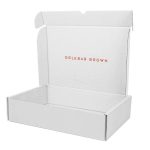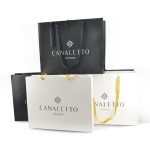In today’s fast-paced consumer landscape, where e-commerce reigns supreme and sustainability concerns grow louder, the humble small goods paper box has emerged as an unexpected champion. These unassuming containers, often overlooked in favor of their flashier counterparts, are quietly revolutionizing how businesses package, protect, and present their products. From artisanal chocolates to luxury cosmetics, from delicate electronics to precious jewelry, small goods paper boxes have become the packaging solution of choice for forward-thinking brands worldwide.
The versatility of small goods paper boxes is truly remarkable. Unlike rigid plastic containers or complex packaging systems, paper boxes offer unparalleled flexibility in design, size, and functionality. Manufacturers can create custom solutions that perfectly fit products of varying dimensions, eliminating wasted space and reducing shipping costs. The inherent strength of corrugated cardboard and specialty paperboard provides excellent protection during transit, while various finishing options like embossing, foil stamping, and window cutouts allow brands to create memorable unboxing experiences that resonate with consumers.
Environmental considerations have propelled small goods paper boxes into the spotlight. As consumers become increasingly conscious of their ecological footprint, businesses are responding by adopting sustainable packaging solutions. Paper boxes, being biodegradable, recyclable, and often made from renewable resources, align perfectly with this green revolution. Many manufacturers now offer boxes made from recycled materials or sourced from sustainably managed forests, complete with certifications that reassure environmentally-conscious customers. This eco-friendly aspect not only benefits the planet but also enhances brand perception and customer loyalty.
The economic advantages of small goods paper boxes cannot be overstated. For small businesses and startups operating on tight budgets, paper packaging offers an affordable yet professional-looking solution that doesn’t compromise on quality. The lightweight nature of paper reduces shipping costs significantly compared to heavier alternatives, while flat-packed boxes minimize storage space requirements. Furthermore, the ease of assembly means businesses can streamline their packaging processes, reducing labor costs and increasing efficiency in fulfillment operations.
Brand storytelling finds a perfect canvas in small goods paper boxes. In an age where consumer engagement extends beyond the product itself, packaging serves as a powerful communication tool. The surface of a paper box becomes a storyteller—conveying brand values, product information, and even instructions through carefully crafted designs and messaging. Luxury brands use textured papers and sophisticated printing techniques to communicate exclusivity, while eco-brands employ minimalist designs and natural finishes to emphasize their environmental commitments. The unboxing moment, facilitated by these thoughtfully designed containers, creates lasting impressions that often get shared across social media platforms.
Innovation continues to push the boundaries of what small goods paper boxes can achieve. Recent advancements include water-resistant coatings that protect contents in humid conditions, integrated security features that prevent tampering, and smart packaging technologies that incorporate QR codes and NFC chips for enhanced customer engagement. Some manufacturers are even developing paper-based alternatives to plastic windows and inserts, creating fully recyclable packaging systems that maintain the visual appeal of traditional designs while improving sustainability.
The future of small goods paper boxes looks brighter than ever. As technology advances and consumer preferences evolve, we can expect to see even more innovative applications of this timeless packaging solution. From boxes that change color to indicate product freshness to packaging that can be repurposed into useful household items, the possibilities are endless. What remains constant is the fundamental value proposition of paper boxes: they protect products, communicate brand identity, satisfy environmental concerns, and do so at a reasonable cost. In a world increasingly focused on sustainability and experience, the small goods paper box has proven itself to be much more than just a container—it’s an essential partner in business success and environmental stewardship.




Leave a Message